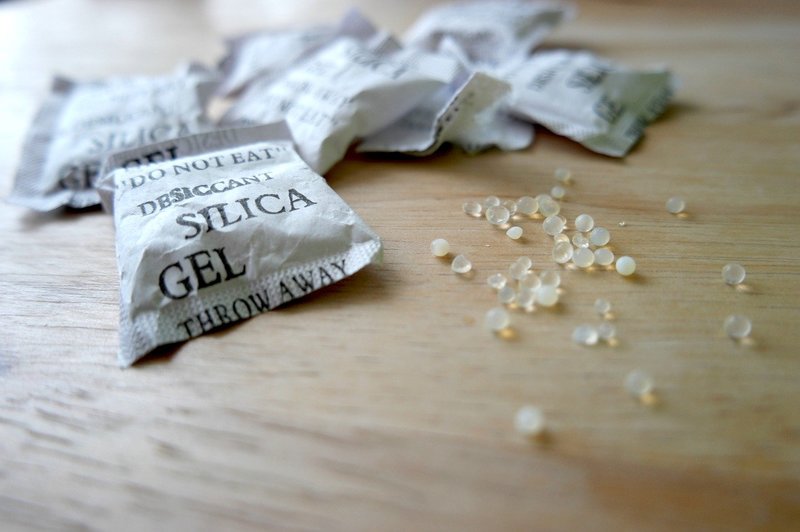There are many ways to eliminate mildew, but have you ever thought about what chemicals absorb moisture to prevent mildew? Keep on going because this article will give you all the necessary information about chemicals and mildew prevention.
Mildew is always naturally present in the atmosphere, but mildew-causing molds require a specific level of moisture and temperatures to develop. They mostly thrive in summer seasons and hot conditions, especially in enclosed areas.

This mildew will grow on anything that provides them with adequate nourishment. Read this linked article about what kills mildew smell to help you with your mildew problems along the way.
Moisture Absorbing Chemicals For Mildew Prevention
Moisture absorbers are particularly useful in the home because they prevent mold and mildew from growing. Mold thrives in moist environments like the basement, kitchen, and bathroom.
Moisture absorbers in packets or buckets can assist in eliminating moisture from a room or enclosed space, which can help prevent mold. There are three main varieties in use today, each with its own set of characteristics that you can use for various applications.
Chemical #1. Silica gel
Silica Gel is a sodium silicate-based moisture absorber. It has a huge and wide specific surface area, making it an effective desiccant and drying agent.
Its name may be deceiving, as this type of silica is solid and comes in beaded or granule form. Adsorption is the process through which Silica gel absorbs moisture from the air.
This indicates Silica pulls moisture to the surface of its many pores instead of absorbing it into its bulk.
Silica gel is a hazardous chemical that should not be consumed, and producers typically include caution on the product’s plastic container to ensure that it is not finished. When utilized at average temperature, silica gel has a very high adsorption capacity.
However, when temperatures reach over 40 degrees Celsius, it may lose the water it retains. Since silica gels are costly, they are not advised to use bigger spaces like basements and kitchens.
What are the typical applications of silica gel?
The majority of people contact silica gel whenever they notice small packets of it wrapped in a product they’ve purchased, particularly in the case of electronics.
The goal of the packets is to absorb any water vapor that may be present in the container, which is especially crucial in the case of electronics.
The power of silica gel to absorb water vapor is nearly legendary—it can absorb up to 40% of its weight in water vapor.
Fact: Despite its ability to absorb a tremendous amount of liquid, silica gel’s outside surface can remain dry to the touch. It is preferred for shipment since it is lower in weight than other absorbent materials, plus it has a very long shelf life and requires no special care.
Chemical #2. Clay absorbers
Clay absorbers are a low-cost option for absorbing moisture in a home or other location where water can grow mold. Since the moisture-absorbing characteristics of clay reduce the dampness that promotes mold growth, those dwellings built with clay bricks rarely become moldy.
However, there is one drawback to utilizing clay. Compared to the other two varieties, it has a meager moisture absorption property.
Clay absorbers are not advised for incredibly humid places. Coal, charcoal, boulders, and gritty gravel are other options.
Chemical #3. Calcium chloride
Calcium chloride, a combination of calcium and chlorine, is possibly the best moisture repellent. It has a high moisture absorption capacity, making it an excellent choice for high humidity moisture absorption applications.
Calcium chloride is commonly used in exporting products and performs an excellent job of keeping them dry for the duration of the journey. Calcium chloride is a good moisture absorber in extremely humid basements, kitchens, closets, cabinets, and other areas.
An electric fan can sometimes increase the compound’s dehumidifying action faster and more extensively. Place the fan over a pail of calcium chloride, and the air movement will circulate moisture above the combination.
Rock salt can be used as an alternative for calcium chloride. Although rock salt is not as effective as table salt, it is a cost-efficient and convenient alternative.
No one should not consume calcium chloride since it might cause mouth, throat, and intestinal burns. Vomiting, extreme dehydration, and severe skin dryness are possible side effects.
You should thoroughly cleanse your hands after handling to avoid eye contact. We suggest you read this article about how to make mold and mildew remover, and this will surely be helpful in your cleaning days.
Conclusion
Mildew-causing molds thrive in wet, warm, poorly lit, and/or airless environments, such as cellars, crawl spaces in houses without basements, and garment closets. It’s also on basement recreation room drapes and rugs, shower curtains, and damp garments wrapped up for ironing.
Molds do significant damage as they grow. They emit a musty odor, discolor fabrics, and occasionally chew into them, causing the fabrics to decay and fall apart, and even leather and paper are also discolored by them.
As it is given above, we believe that your question about what chemicals absorb moisture to prevent mildew is definitely answered.
